Although snowmaking is nothing new to North America’s ski resorts and ski areas with alpine runs, it’s a different story with cross-country ski areas. However, as the effects of climate change continue to persist with the shortening of snow seasons and less snow falling, it’s time these ski areas take a serious look at snowmaking systems and the benefits they can bring.
This past fall, the Cross-Country Ski Areas Association (CCSAA) asked its membership to take part in a survey to gauge this industry sector’s thoughts on snowmaking at their areas. One point that was exceptionally clear is that at $200,000 or more per system, the installation cost of a snowmaking system is a major barrier for cross-country ski areas. Only 26.98 percent of responding areas have a snowmaking system installed on their trails, and 55.56 percent of those are looking to expand their snowmaking capacity; this certainly is an untapped market for snowmaking manufacturers.
General
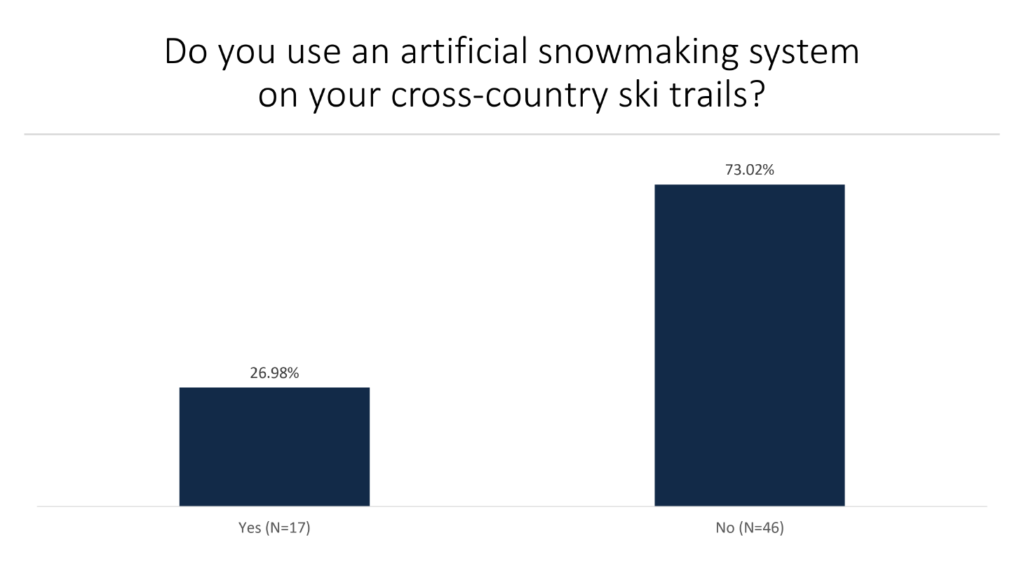
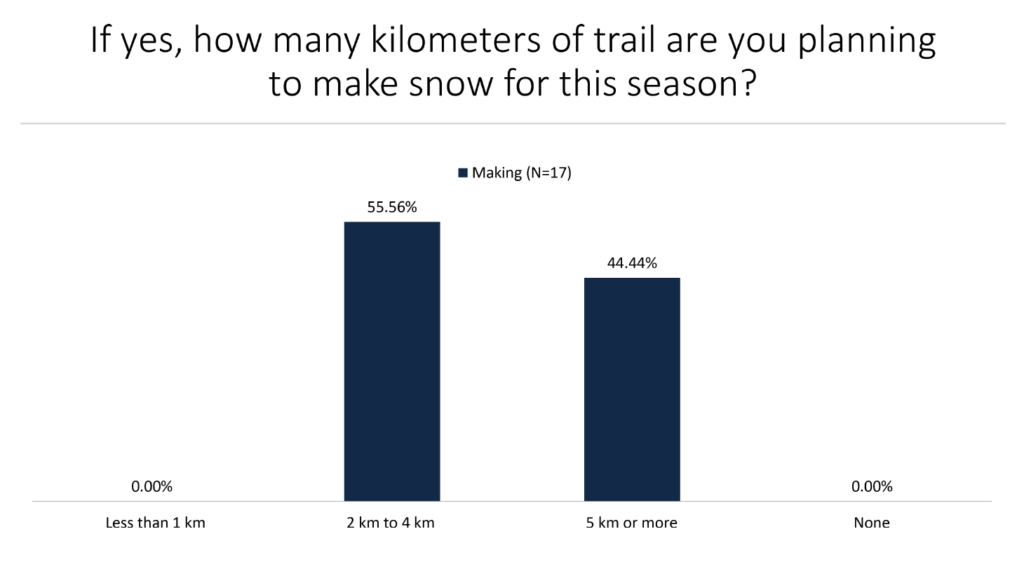
Planning
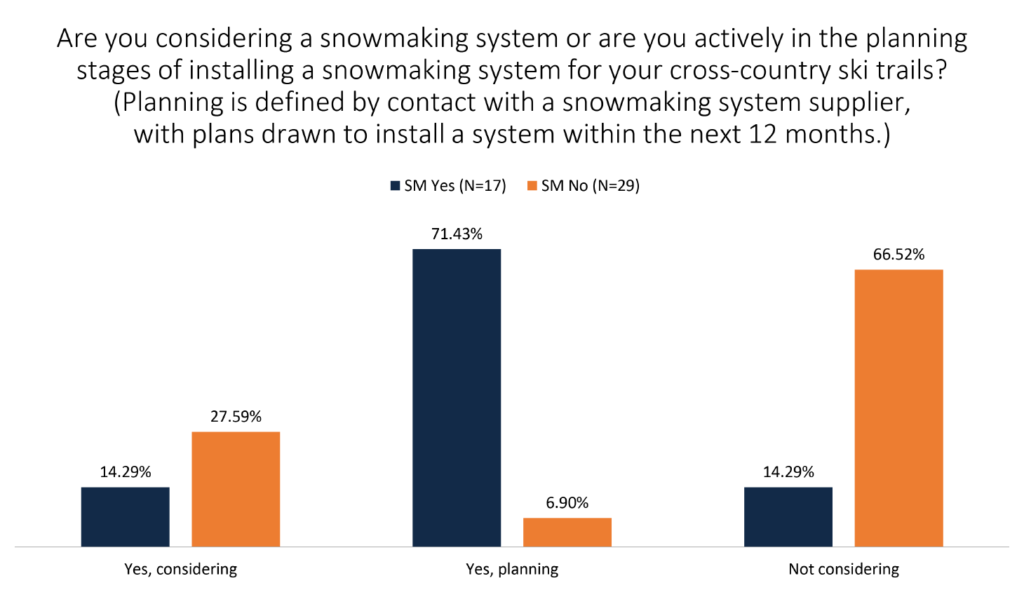
All those who answered “yes” to planning expect to have their snowmaking systems up and running within the year.
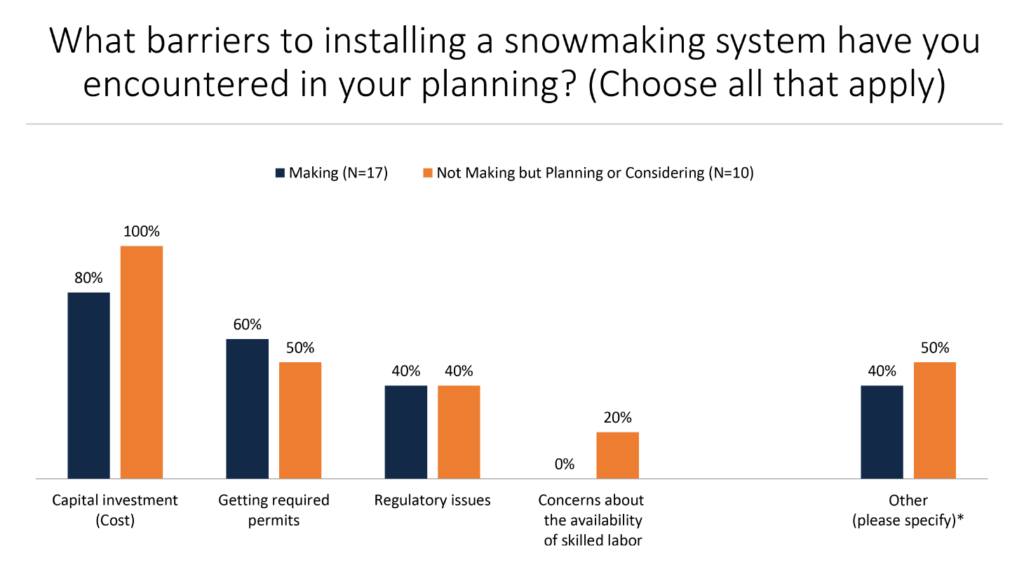
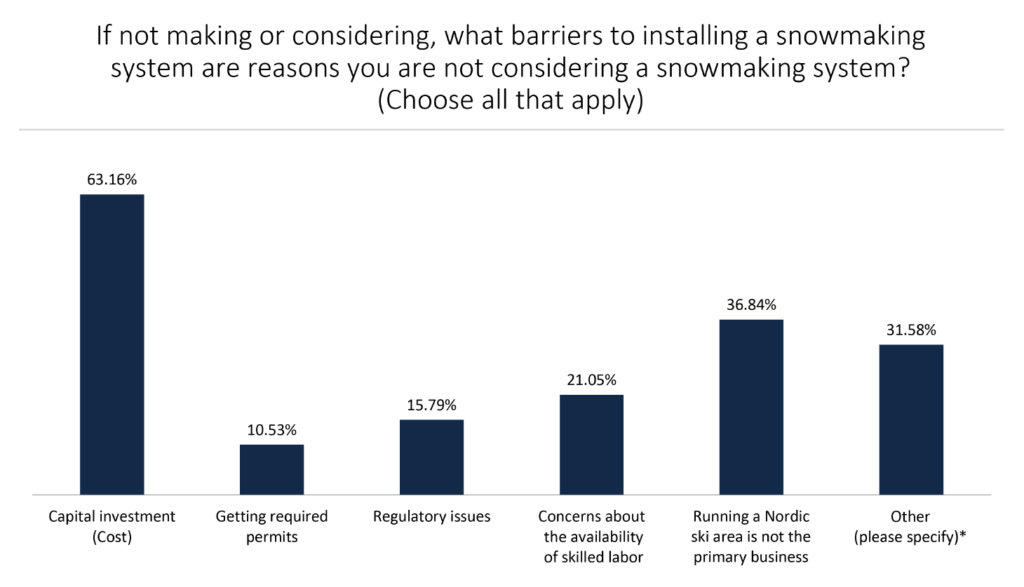
*Other barriers
- Ownership/golf course
- Water availability
- Resistance from local
governmental entity that controls access to the trail system - Snowmaking companies fail
to follow up - Demonstrating that the investment
will pay off - Mother Nature
Established System
| Manufacturer | Number of guns | Area it can cover |
|---|---|---|
| SMI and Self Designed Water and Electric | 7 | 269,000 sq. ft. |
| SMI | 41 snow sticks | 2 km |
| SMI, Areco | 8 | 2.5 km, 4 fairways on golf course |
| SMI Super Polecat | 35 | 8 km |
| Areco | 1 | Not much, needs to be trucked in |
| HKD | 36 | 5 km |
| SMI | 5 | – |
| SMI | 5 | 3 km |
| HKD | 15 operating at one time | 1,500 linear feet per set up |
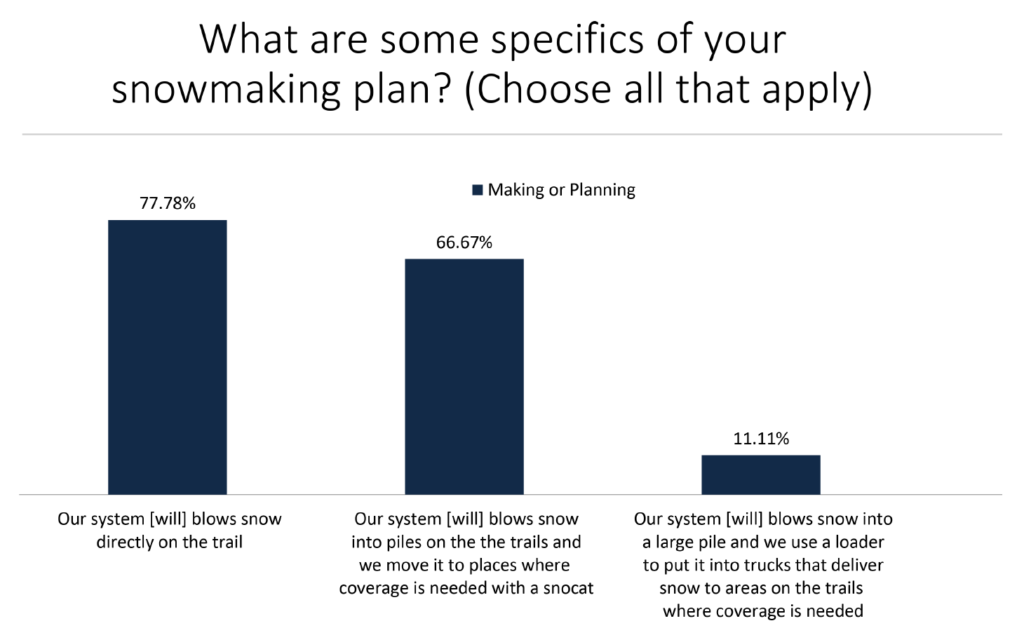

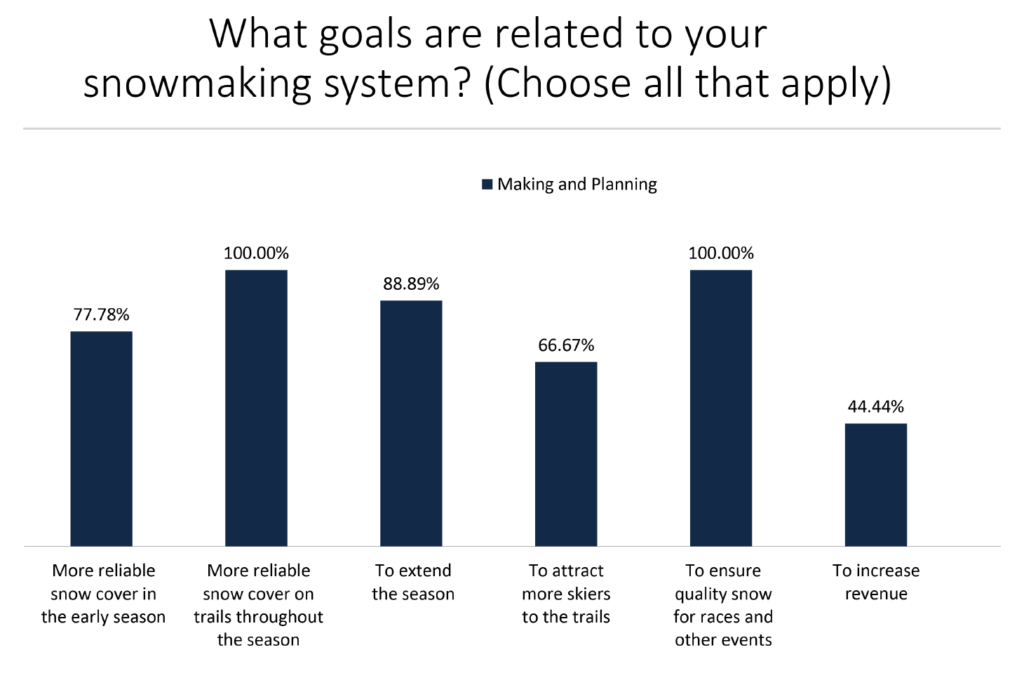
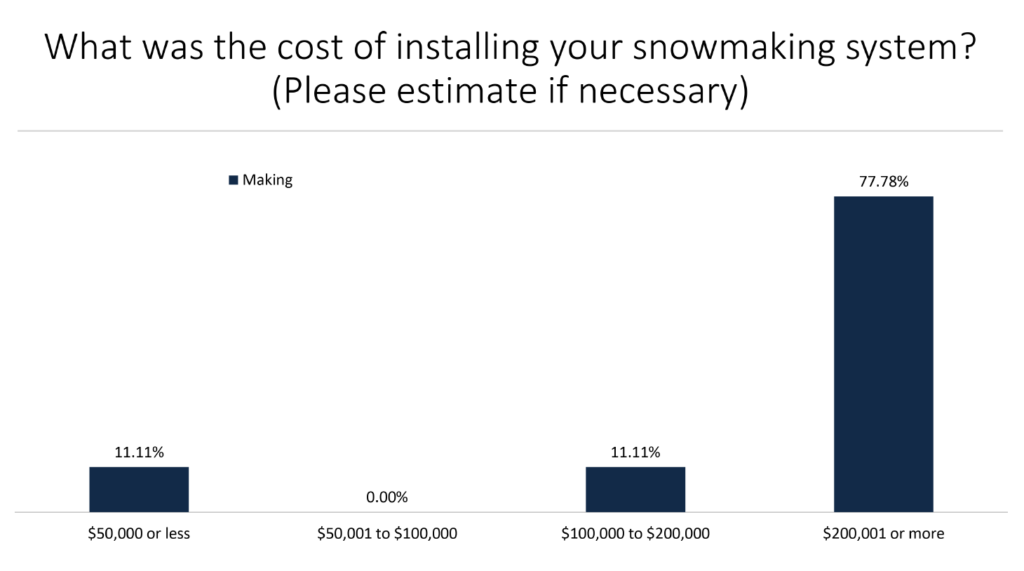
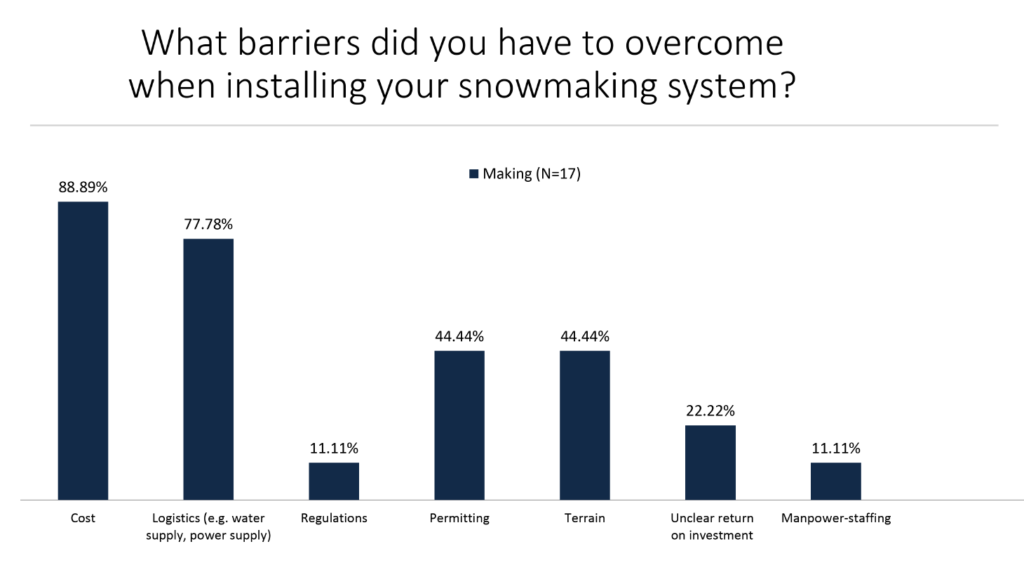
Advice from users
- Review existing snowmaking operations to understand all of the elements involved, and both installation and maintenance costs and manpower needed.
- We went with a buried underground system that blows snow directly onto the trail because it is less work. It is expensive though. It also takes a couple days to move the snow around on the trails with a large cat machine after we make it, so that is another cost with the underground system we have. It’s a great system and we love it. We may only have to make snow two to three times a year because we can make so much snow when we do. It only takes one person to turn on the system, then turn on each snowstick and finally check that they are working in about an hour. Then we can run it as long as we want. In about 12 hours we have enough snow to cover our two kilometer loop.
- Get support from the skiing community.
- Ensure your access to water and be able to make enough trail to make skiing only on manmade worthwhile.
- One-third of our trail system does not have electric nor water access along the trail. We pull cords and hose through the woods to reach those trails. And now those trails are needed for ski races … make sure you plan for the future: unknown demands for races, possible races, etc., and your trails must be “climate change” ready (i.e. trail conditions that will allow grooming and skiing with very limited snow depth).
- Cost depends on expectation. The higher the expectation, the more expensive the infrastructure (pumps, compressors, water supply). Know what you want your system to achieve and if the expectation is viable. If you want to cover five kilometers in one night, can you support that with labor, water resources and other logistics.
- Get the snowmaking vendor to come walk your property and make a proposal.
It’s a significant expense and no small undertaking each year, but we would not be viable without it.
Survey Respondent
Final comments
- It is very effective. Our goal is 90 days of quality skiing each year.
- An absolute necessity for our long-term survival as a recreational and racing center. We might be able to start next summer.
- People really love our snowmaking loop. The terrain is varied with some climbing and it is fun to ski. It has really been a nice addition to our ski center.
- Every situation is probably different. Grooming is as important as snowmaking. Think long term. Find a source for funding who is in it out of passion because there are probably much better ways to invest for a monetary return.
- Worth it in the end.
- Way too expensive for 99 percent of the Nordic centers out there. Waste of time to talk about it.
- It’s a significant expense and no small undertaking each year, but we would not be viable without it.
- We are also trying to determine whether the initial cost of the system and operating costs will be offset with adequate additional revenue.
- We are installing snowmaking on our closed-in, key access trails which will allow us to provide a three-kilometer-loop if there is no natural snow and to access our higher elevation trails/trails that better retain natural snow when we do get snowfall.
- Pursued, and would love to have snowmaking. Ultimately shut down by water access. A huge issue in the high desert west.
- Make small piles, push it out, repeat. Never make large whales and attempt to push. Always have people with a passion for Nordic on the snowmaking team. Nordic snow is not alpine snow.
- Our main planning problem has been snowmaking companies have initial discussions with us and say they will get back to us and we never hear from them again.
- Snowmaking has doubled our average days open and taken an inconsistent open schedule to a fully consistent schedule of days open, providing value to our pass holder base. Events do not need to be canceled due to lack of snow and are often relocated to our venue from areas with no snow.
- We started making snow on our ski trails for the 1987/88 season and have tried many variations of portable systems to figure out which works best and with different budgets. We have considered machinery that makes snow above freezing temperatures, high-pressure conventional systems and low-pressure systems. We probably made all the mistakes possible.
- We have had snowmaking since 2012, but are adding to it and improving systems as we do most years.
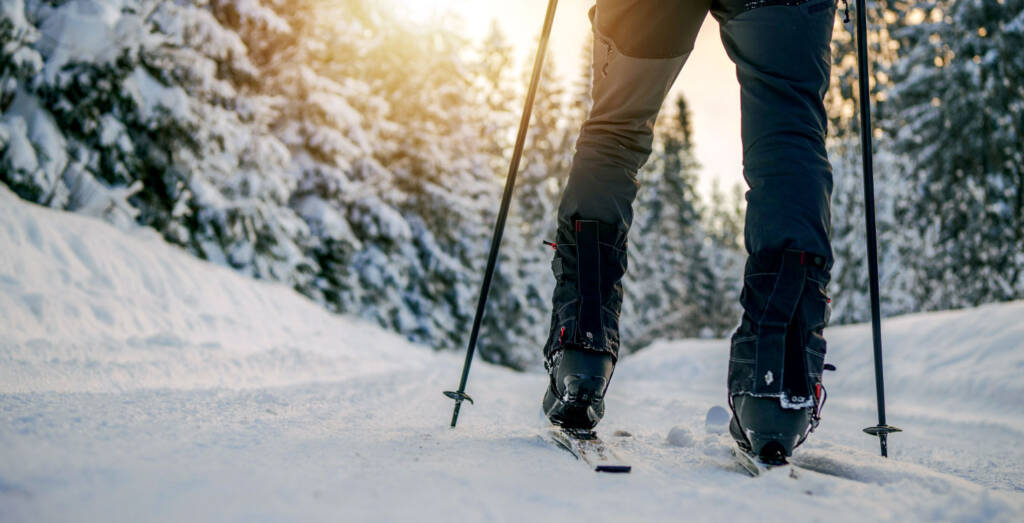
The CCSAA Snowmaking survey was conducted online in September and October 2021, and analyzed using SurveyMonkey comparative tools and Excel. Limitations of this survey were a small sample of respondents. Any questions and requests for clarification or more detailed data can be directed to OIA Research at kdavis@outdoorindustry.org.
Editor’s Note: Advice and comments were edited for grammar and clarity. The data reflects the opinions of survey respondents, which do not necessarily reflect those of the entire industry.
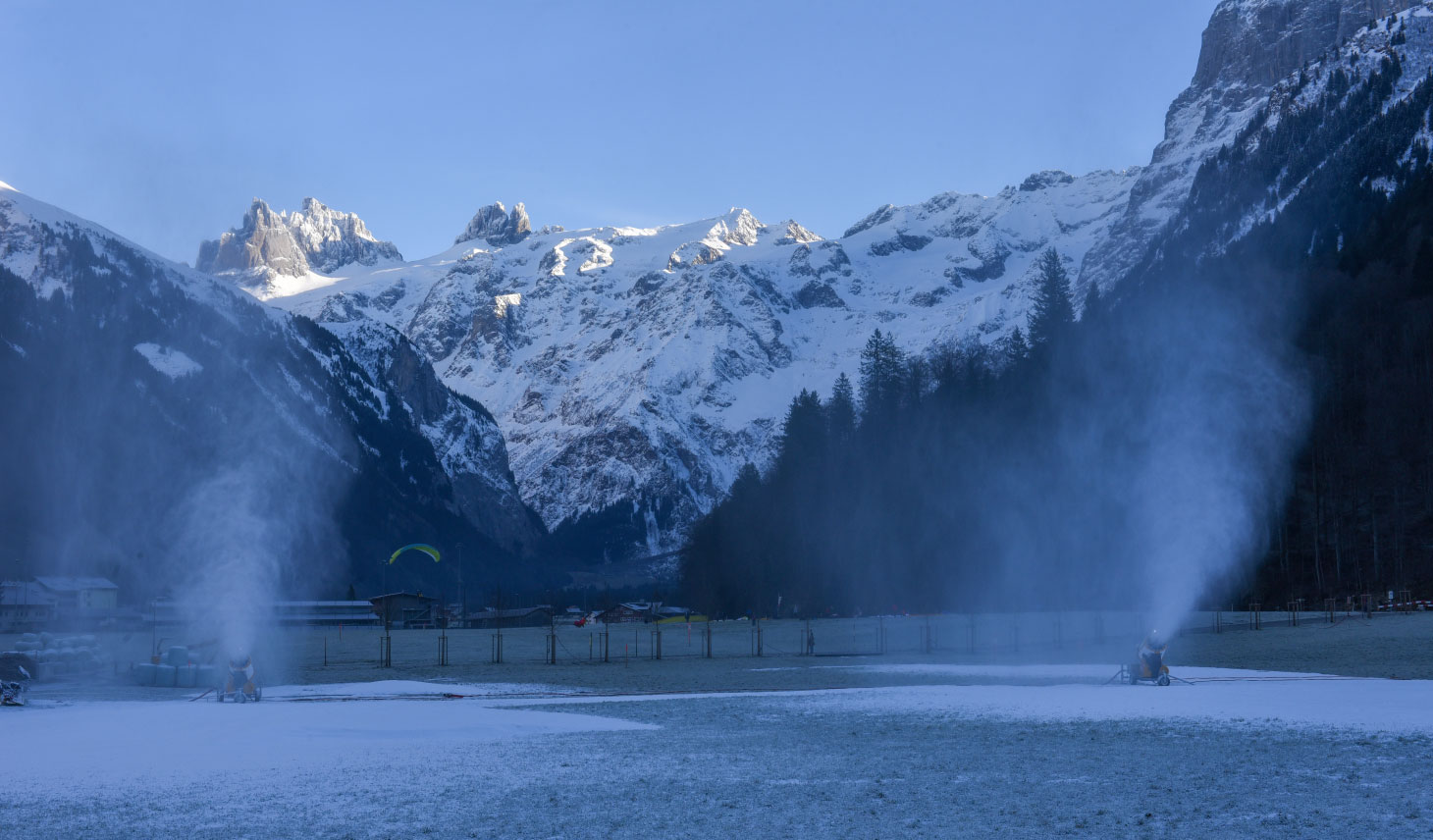
![[image placeholder]](https://www.snowopsmag.com/wp-content/uploads/2023/09/placeholder@2x-890x664.png)